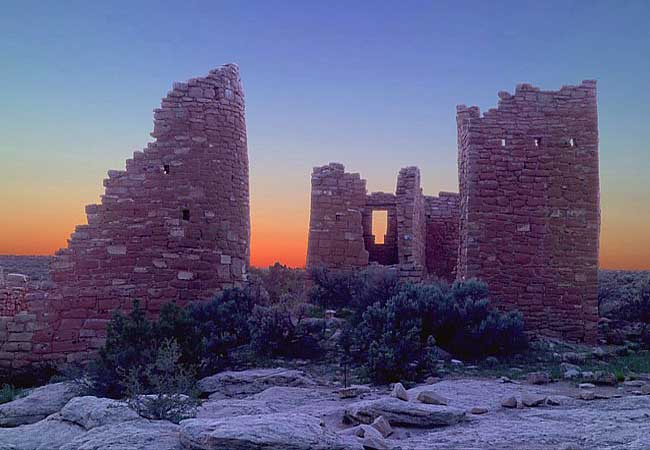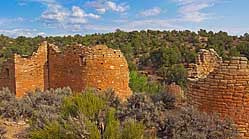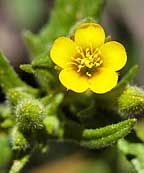|
Scenic USA - Utah Hovenweep Castle |

| Photo by Albert Yanowich Jr. Albert Yanowich Photography Inset Photos - Jacob Frank, NPS |
Overshadowed by its famous eastern neighbor, Mesa Verde, Hovenweep National Monument  is located in a remote section of the Colorado Plateau, spanning the border of Colorado and Utah. Established in 1923 by President Warren G. Harding, the National Monument was set aside to protect six different groups of ancient puebloan-era villages built between 1200 and 1300 CE. These handmade brick structures, constructed in a variety of shapes and sizes, include square towers, circular kivas and towers, and D-shaped dwellings. Sections of the 784 acre park are now surrounded by an even larger Canyons of the Ancients National Monument, established in 2001.
is located in a remote section of the Colorado Plateau, spanning the border of Colorado and Utah. Established in 1923 by President Warren G. Harding, the National Monument was set aside to protect six different groups of ancient puebloan-era villages built between 1200 and 1300 CE. These handmade brick structures, constructed in a variety of shapes and sizes, include square towers, circular kivas and towers, and D-shaped dwellings. Sections of the 784 acre park are now surrounded by an even larger Canyons of the Ancients National Monument, established in 2001.
The Square Tower Group, one of the most popular stops at  Hovenweep, is clustered along Little Ruin Canyon. A mile and a half mile trail loops around the rim where visitors may see nine unique sites. A half mile loop out to Tower Point will add about 20 minutes to this hour long walk. Hovenweep Castle, captured here in this enchanting twilight view, is one of the most impressive groups of towers and masonry structures in Little Ruins Canyon. The self guided visit may also turn into a wildlife tour. The grounds are home for deer, rabbits, coyotes and foxes. Located in the arid Great Sage Plain, shrubs and juniper trees are the most visible plant life at Hovenweep. But, spring and summer rains can bring some color to the landscape in the form of wildflowers.
Hovenweep, is clustered along Little Ruin Canyon. A mile and a half mile trail loops around the rim where visitors may see nine unique sites. A half mile loop out to Tower Point will add about 20 minutes to this hour long walk. Hovenweep Castle, captured here in this enchanting twilight view, is one of the most impressive groups of towers and masonry structures in Little Ruins Canyon. The self guided visit may also turn into a wildlife tour. The grounds are home for deer, rabbits, coyotes and foxes. Located in the arid Great Sage Plain, shrubs and juniper trees are the most visible plant life at Hovenweep. But, spring and summer rains can bring some color to the landscape in the form of wildflowers.  Desert plants use different strategies to conserve moisture, and often wildflowers are able to find a moisture laden niche to grow. Other times seeds lie dormant for years until conditions are favorable to sprout and grow.
Desert plants use different strategies to conserve moisture, and often wildflowers are able to find a moisture laden niche to grow. Other times seeds lie dormant for years until conditions are favorable to sprout and grow.
The first reports of the abandoned villages of Hovenweep were made in the mid 19th century by the leader of a Mormon expedition, W.D. Huntington. But it was photographer William Henry Jackson who adopted the name Hovenweep, meaning deserted valley to the Paiute and Ute. It took years for theories to develop of why the Pueblo structures were abandoned at the end of the 13th century. First indications of a mega-drought seemed a logical answer, but were later challenged by a range of theories, varying from resource depletion to factionalism and warfare. Although we may never know the main reason for the departure of these ancestral Puebloans, the time period of their rise and fall is seen throughout Puebloan settlements in America's Southwest.
Area Map
Square Tower Group Trail Map

|
More Area Attractions |
|
Copyright © 2022 Benjamin Prepelka
All Rights Reserved
